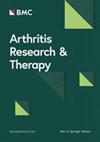S100蛋白是多关节幼年特发性关节炎患者阿帕他赛反应的潜在预测性生物标记物
IF 4.9
2区 医学
Q1 Medicine
引用次数: 0
摘要
幼年特发性关节炎(JIA)是一组可导致明显残疾和生活质量下降的异质性疾病。有关临床反应预测因素的数据不足以指导患者选择合适的生物制剂。本研究旨在探讨S100A8/9和S100A12作为阿帕赛普对多关节病程幼年特发性关节炎(pJIA)反应的预测性生物标志物的倾向性。这项探索性分析采用了皮下注射阿帕塞普治疗活动性pJIA患者(n = 219)的3期试验(NCT01844518)的数据。我们评估了基线生物标志物水平与JIA-美国风湿病学会(ACR)标准反应或基线疾病活动度(通过使用C反应蛋白[JADAS27-CRP]对27个关节的幼年关节炎疾病活动度评分)改善之间的关系。评估从基线到第 4 个月的生物标志物水平变化,以预测 21 个月后的疾病结果。基线时,158 名患者有可用的生物标志物样本。较低的基线 S100A8/9 水平(≤ 3295 ng/mL)与达到 JIA-ACR90 (几率比 [OR]:2.54 [95% 置信区间 (CI):1.25-5.18])、JIA-ACR100(OR:3.72 [95% CI:1.48-9.37])、第 4 个月时的 JIA-ACR 非活动性疾病(ID;OR:4.25 [95% CI:2.03-8.92])、第 4 个月时的 JADAS27-CRP ID(OR:2.34 [95% CI:1.02-5.39])和第 16 个月时的 JIA-ACR ID(OR:3.01 [95% CI:1.57-5.78])。较低的基线 S100A12 水平(≤ 176 ng/mL)与达到 JIA-ACR90 (OR: 2.52 [95% CI: 1.23-5.13]) 、JIA-ACR100 (OR: 3.68 [95% CI: 1.46-9.28])、JIA-ACR ID(OR:3.66 [95% CI:1.76-7.61])、JIA-ACR90(OR:2.03 [95% CI:1.07-3.87])、JIA-ACR100(OR:2.14 [95% CI:1.10-4.17])和 JIA-ACR ID(OR:4.22 [95% CI:2.15-8.29])。从基线到第 4 个月,JIA-ACR90/100/ID 反应者中 S100A8/9 和 S100A12 的降幅普遍超过 50%。S100A8/9和S100A12蛋白的基线水平较低,预示着对阿帕他赛治疗的反应比水平较高者更好,可作为pJIA的早期预测生物标志物。这些生物标志物水平的降低也可预测pJIA患者对阿帕他赛治疗的长期反应。本文章由计算机程序翻译,如有差异,请以英文原文为准。
S100 proteins as potential predictive biomarkers of abatacept response in polyarticular juvenile idiopathic arthritis
Juvenile idiopathic arthritis (JIA) comprises a heterogeneous group of conditions that can cause marked disability and diminished quality of life. Data on predictors of clinical response are insufficient to guide selection of the appropriate biologic agent for individual patients. This study aimed to investigate the propensity of S100A8/9 and S100A12 as predictive biomarkers of abatacept response in polyarticular-course juvenile idiopathic arthritis (pJIA). Data from a phase 3 trial (NCT01844518) of subcutaneous abatacept in patients with active pJIA (n = 219) were used in this exploratory analysis. Association between biomarker levels at baseline and improvements in JIA-American College of Rheumatology (ACR) criteria responses or baseline disease activity (measured by Juvenile Arthritis Disease Activity Score in 27 joints using C-reactive protein [JADAS27-CRP]) were assessed. Biomarker level changes from baseline to month 4 were assessed for disease outcome prediction up to 21 months. At baseline, 158 patients had available biomarker samples. Lower baseline S100A8/9 levels (≤ 3295 ng/mL) were associated with greater odds of achieving JIA-ACR90 (odds ratio [OR]: 2.54 [95% confidence interval (CI): 1.25–5.18]), JIA-ACR100 (OR: 3.72 [95% CI: 1.48–9.37]), JIA-ACR inactive disease (ID; OR: 4.25 [95% CI: 2.03–8.92]), JADAS27-CRP ID (OR: 2.34 [95% CI: 1.02–5.39]) at month 4, and JIA-ACR ID (OR: 3.01 [95% CI: 1.57–5.78]) at month 16. Lower baseline S100A12 levels (≤ 176 ng/mL) were associated with greater odds of achieving JIA-ACR90 (OR: 2.52 [95% CI: 1.23–5.13]), JIA-ACR100 (OR: 3.68 [95% CI: 1.46–9.28]), JIA-ACR ID (OR: 3.66 [95% CI: 1.76–7.61]), JIA-ACR90 (OR: 2.03 [95% CI: 1.07–3.87]), JIA-ACR100 (OR: 2.14 [95% CI: 1.10–4.17]), and JIA-ACR ID (OR: 4.22 [95% CI: 2.15–8.29]) at month 16. From baseline to month 4, decreases in S100A8/9 and S100A12 generally exceeded 50% among JIA-ACR90/100/ID responders. Lower baseline levels of S100A8/9 and S100A12 proteins predicted better response to abatacept treatment than higher levels and may serve as early predictive biomarkers in pJIA. Decreases in these biomarker levels may also predict longer-term response to abatacept in pJIA.
求助全文
通过发布文献求助,成功后即可免费获取论文全文。
去求助
来源期刊

Arthritis Research & Therapy
RHEUMATOLOGY-
CiteScore
8.60
自引率
2.00%
发文量
261
审稿时长
14 weeks
期刊介绍:
Established in 1999, Arthritis Research and Therapy is an international, open access, peer-reviewed journal, publishing original articles in the area of musculoskeletal research and therapy as well as, reviews, commentaries and reports. A major focus of the journal is on the immunologic processes leading to inflammation, damage and repair as they relate to autoimmune rheumatic and musculoskeletal conditions, and which inform the translation of this knowledge into advances in clinical care. Original basic, translational and clinical research is considered for publication along with results of early and late phase therapeutic trials, especially as they pertain to the underpinning science that informs clinical observations in interventional studies.
 求助内容:
求助内容: 应助结果提醒方式:
应助结果提醒方式:


